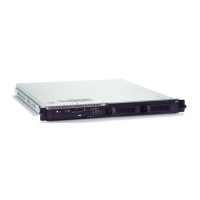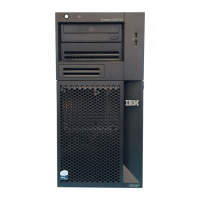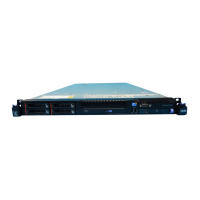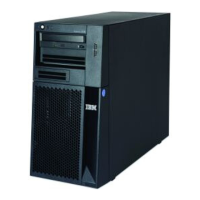10. All I/O drawers except the primary I/O drawer should now be physically
disconnected from the system rack.
Go to “Step 1540-11”.
Step 1540-11
The primary I/O drawer is the only remaining I/O drawer connected to the system rack.
Turn on the power.
If the boot is not successful, the problem is in the primary I/O drawer.
Was the boot successful?
No Go to “Step 1540-12”.
Yes Go to “Step 1540-24” on page 128.
Step 1540-12
Perform the following to unconfigure the primary I/O drawer:
1. Turn off the power.
2. If you have not already done so, reset the service processor settings with the
instructions in step 6 on page 117, then return here and continue.
3. Exit the service processor menus and remove the ac power cables from the system
rack and the I/O drawer.
Attention: The I/O rack you are working on may have I/O drawers that are
connected to other system racks or other third-party drawers attached to the power
distribution bus. To avoid removing power from drawers that are used by other
systems, when you are instructed to unplug power from an I/O drawer, remove only
the PDU side of the single ac cables connected to the I/O drawer in question.
4. If a display adapter with keyboard and mouse connected to the primary I/O drawer
is being used as the console, locate a stand-alone serial terminal (possibly a 3151)
and connect it to the S1 serial port.
5. Remove the keyboard and mouse, if attached to the primary I/O drawer.
6. Leave the remaining external cables (RIO-port0, RIO-port1, SPCN-port0,
SPCN-port1, JTAG-SP, and OPPanel) connected.
7. Disconnect the diskette drive cable from the diskette drive connector on the service
processor card.
8. Plug in the ac power cables for the system rack and the I/O drawer. The operator
panel should now display a blank yellow backlighted LED panel.
Are there any adapters in slots 1, 2, 3, or 4?
No Go to “Step 1540-13” on page 124.
Yes Go to “Step 1540-16” on page 124.
Chapter 3. Maintenance Analysis Procedures 123
